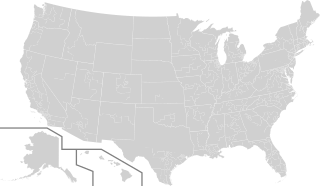United States House of Representatives elections in New Hampshire, 2018
|
|
||||||||||||||||||||||
|---|---|---|---|---|---|---|---|---|---|---|---|---|---|---|---|---|---|---|---|---|---|---|
|
||||||||||||||||||||||
|
All 435 seats in the United States House of Representatives 218 seats needed for a majority |
||||||||||||||||||||||
|
||||||||||||||||||||||

Seat up for election in 2018 |
||||||||||||||||||||||
|
||||||||||||||||||||||
Seat up for election in 2018
The 2018 United States House of Representatives elections will be held on November 6, 2018. Elections will be held to elect representatives from all 435 congressional districts across each of the 50 U.S. states. Non-voting delegates from the District of Columbia and four of the five inhabited U.S. territories will also be elected. The winners of this election will serve in the 116th United States Congress, with seats apportioned among the states based on the 2010 United States Census. Republicans have held a House majority since the 2010 elections, although they lost six seats in the 2016 elections.
The midterm elections will take place halfway through Republican President Donald Trump's term. The 2018 Senate elections, 2018 gubernatorial elections, and many state and local elections will also be held on this date.
Thirteen Republicans are retiring from their seats in 2018.
Eight Democrats are retiring from their seats in 2018.
Several sites and individuals publish predictions of competitive seats. These predictions look at factors such as the strength of the incumbent (if the incumbent is running for re-election), the strength of the candidates, and the partisan leanings of the state (reflected in part by the state's Cook Partisan Voting Index rating). The predictions assign ratings to each seat, with the rating indicating the predicted advantage that a party has in winning that seat. Most election predictors use "tossup" to indicate that neither party has an advantage, "lean" to indicate that one party has a slight advantage, "likely" or "favored" to indicate that one party has a significant but not insurmountable advantage, and "safe" or "solid" to indicate that one party has a near-certain chance of victory. Some predictions also include a "tilt" rating that indicates that one party has an advantage that is not quite as strong as the "lean" rating would indicate. If a candidate's name is in parentheses, then the seat is open due to retirement or pursuit of another office.
...
Wikipedia


